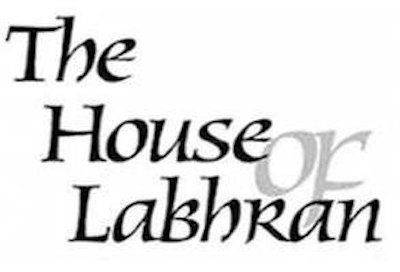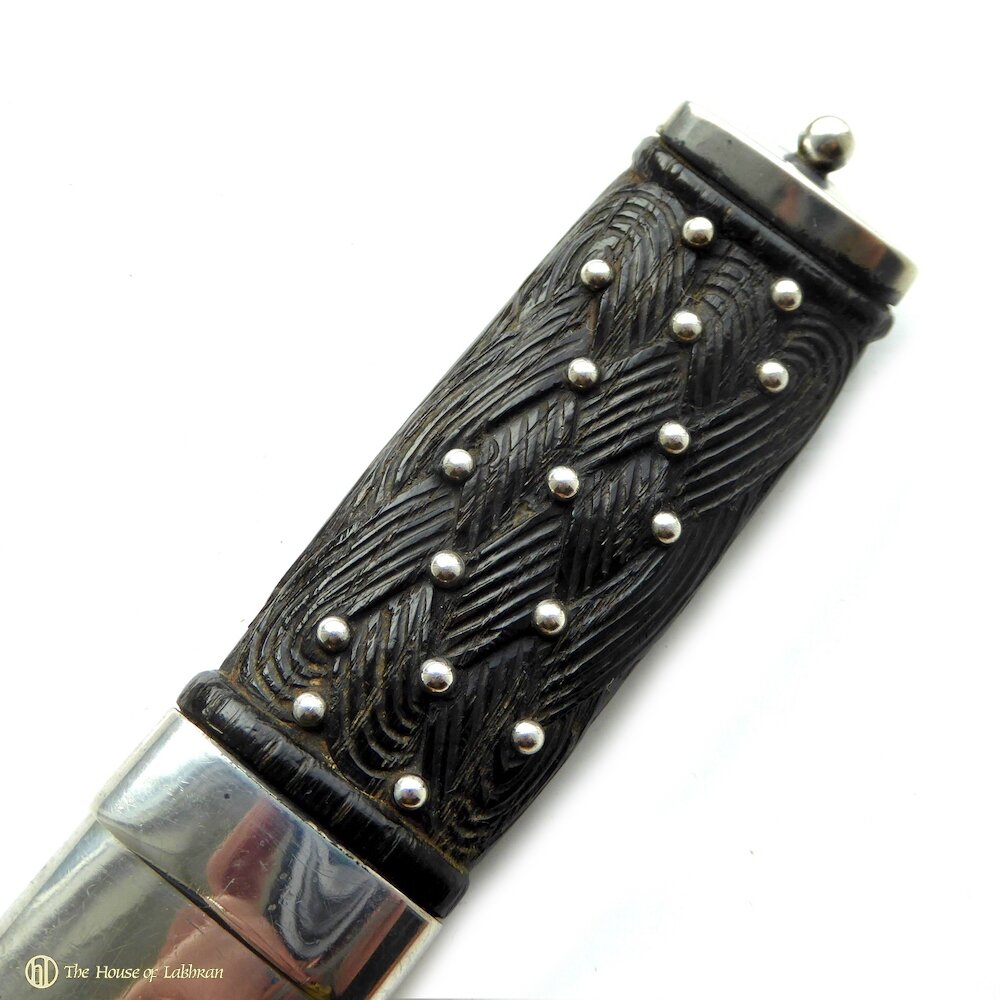Inverness Silver 1920's Scottish Sgian Dubh
Inverness Silver 1920's Scottish Sgian Dubh - Medlock and Craik Silver vintage Scottish sgian dubh - Fine Scottish antique sgian dubh with rope pattern knot work black wood handle. Silver mounts hallmarked made by Medlock & Craik Inverness. Plain style mounts with a studded grip and a pin set top.
Inverness Silver 1920's Scottish Sgian Dubh
Medlock's Highland Jewellery Establishment - Inverness - 1893
Arthur Medlock was born at Polton Street, Cockpen, Midlothian on the 17th June 1852. He served his apprenticeship as watchmaker, probably under Daniel Ferguson of Inverness as it is noted that he married Ferguson's daughter, Anne, on the 22nd April 1874.Arthur Medlock started in business on his own account in c.1876 from premises at 35, Castle Street, Inverness. In May 1883 he relocated to the No.6, Bridge Street premises where he was to stay for the rest of his career. He was a known maker of Highland Ornaments and gold jewellery. Although Medlock entered marks at the Edinburgh Assay Office in 1890, most of his output appears to be marked with just a simple 'MEDLOCK' and 'INVss'. In September 1913, Arthur Medlock sold his business to James Robert Craik, and the new owner styled his business as Medlock & Craik. Following his retirement, Arthur Medlock took residence in Ireland and died there on the 4th August 1930.
Vintage & Antique Scottish Sgian Dubhs - We have a passion for fine antique and collectible sgian dubh’s and Highland dirks. We source antique Jacobite styles of the 18th century, high Victorian styles and regimental patterns of WW1 – WW2. Our sgian dubh and dirk range make wonderful addition to any Highland dress collection.Our range of fine hallmarked sterling silver skean dubh’s made by the Highland regimental silversmith and Royal silversmiths Hamilton & Inches in Edinburgh, Scotland. We can engrave many of these skean dubhs for presentation gifts.
The Gaelic sgian dubh meaning “black knife”, where “black” may refer to the usual colour of the handle of the knife. It is also suggested that “black” means secret, or hidden, as in the word blackmail. This is based on the stories and theories surrounding the knife’s origin and the meaning of “Dubh” in Gaelic, in particular those associated with the Highland custom of depositing weapons at the entrance to a house prior to entering as a guest. Despite this practice, a small twin edged-dagger, (‘Mattucashlass’), concealed under the armpit, combined with a smaller knife, (‘Sgian dubh’).




